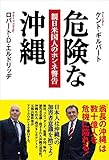友人の息子は、ボーイスカウトのボランティア活動として、目黒歴史資料館の案内板を全部英訳することにしました。英語と日本語の両方が分かる私たち何人かが、実際の翻訳作業を行うことになりました。
My friend’s son decided to translate all the Japanese script on the displays at the Meguro Historical Archive as a boy scout Eagle project. The actual translation was done by several of us who understand both English and Japanese.
私は室内の家具及び暖房器具の担当になりました。その一部を二カ国語で紹介します。 昔の日本人がどれほど苦労して部屋を暖めていたのかを学んだので、北海道の開発がかなり遅れたことに納得しました。
I was assigned interior furniture and heating devices. Here is a small portion of my section in both English and Japanese. Upon learning how historically difficult it was to heat rooms in Japan, I realized why the development of Hokkaido came so late.
____________
卓袱台 Low table (Chabudai)
卓袱台が登場したのは明治時代のことで、都市部を中心に普及しました。円形・正方形・長方形(横と縦の比率が1:1.5ぐらい)が一般的な形でした。卓袱台は足が折りたためること、小型であることからわかるように、使い終わったら簡単に部屋の移動・収納できる道具です。この点が大型で移動しにくい座卓と違うとこです。移動・収納が可能であったため、最初は普及したのが比較的室内の狭い住宅の多い都市部であったと考えられます。
Low tables appeared during the Meiji Period and came into wide use mostly in urban areas. The most common shapes were round, square, or rectangular (a ratio of length and width about 1:1.5). Low tables had folding legs and were small in size, and after use they could be moved or stored away easily. This was the main difference from large tables. Because they could be moved and stored away, it is thought that at first they came into wide use in urban areas which had relatively more houses with small rooms.
卓袱台が使われるようになる前は、家族がそれぞれ一人につき自分用のお膳を持っていました。お膳は箱型になっているものが多く使われ、中に自分用の茶碗や箸などを納めました。食事の際は蓋をひっくり返して、その上で食事をしました。
Before low tables came into use, each family member had their own table. Box-type tables were most commonly used, with a personal bowl and chopsticks stored inside. For a meal, the lid was turned over to be used for eating.
櫓炬燵 Wooden Frame Heating Tables (Yagura Kotatsu)
木製の櫓の中に炭火を入れた火入れをおいて、炬燵布団で櫓をおおった暖房具です。
A heating apparatus whereby a container containing lighted charcoal was placed inside a wooden frame which was then covered with a futon.
部屋に小さな炉を切って、その中に灰や熾火・炭を入れ、上に櫓を置いて温まったのが炬燵の始まりです。江戸時代の前期に行火を使った置炬燵が普及し始め、やがて炬燵櫓の中に土製の火入れを入れた櫓炬燵(安全炬燵)も生まれました。
Centuries ago, a small fireplace was made in the floor of the room into which were placed ashes, glowing embers, and charcoal, and a wooden frame was placed over it for heating. In the early Edo Period (1608-1868), tables with a foot warmer inside came into wide use, and eventually an earthen vessel was used to contain the heating material for safety, and the “Safety Kotatsu” was born.
置炬燵や櫓炬燵の登場によって、炉がない部屋も炬燵が使用可能になりました。
The development of the portable heating apparatus made it possible to use table heaters in rooms without a fireplace.
置炬燵 Portable Heating Tables (Oki Kotatsu)
炭火や熾火・灰を入れて炬燵布団をかけて用いる炬燵です。座布団を巻いて、上に布団をかけて使いました。寝る時に、足元に入れて使うこともありました。
A device with embers, charcoal and ashes inside, covered by a futon. It was used by rolling up a small cushion and then covering it with a futon. It was sometimes placed inside at the foot of a futon when sleeping.
一般的には幅30㎝、長さ20㎝、高さ20㎝くらいの大きさで、この中に火入れを入れて使います。明治時代に、瓦焼きや土製の置炬燵が急速に普及しました。
The size was generally 30 cm wide, 20 cm long, and 20 cm tall. A fire container was placed inside. In the Meiji Period, tile or earthenware portable heating tables quickly came into wide use.
火鉢 Charcoal Brazier (Hibachi)
炭火を使用する暖房具です。
Heating device using charcoal.
起した炭火を、火箸で中央の灰の上に置いて使います。灰の上には五徳を立てて、鉄瓶で湯を沸かすこともありました。
Used by placing lighted charcoal in the center of the ashes using chopstick tongs. A trivet could be placed above the ashes and water heated in an iron kettle.
明治の中ごろから炭焼きの技術が発達し、木炭が容易に手に入れることができるようになったため、一段と使われるようになりました。
In the middle of the Meiji Era (1868-1912) because charcoal burner technology advanced and charcoal became easy to obtain, the hibachi came into much wider use.
火箸の材質や形の種類としては、角形の木製のものや丸木をくりぬいたもの、土製や鉄製、陶器性のものなどがあります。
There were square and wooden chopstick tongs, and tongs made by hollowing out a log. The materials were wood, iron, or ceramics.
- やっと自虐史観のアホらしさに気づいた日本人/PHP研究所

- ¥1,620
- Amazon.co.jp
- 危険な沖縄 親日米国人のホンネ警告/産経新聞出版

- ¥1,404
- Amazon.co.jp





